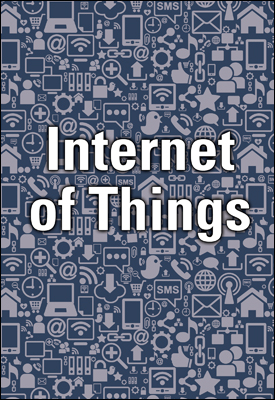Case Study: Internet of Things (IoT)
Case Study: The Internet of Things (IoT)
 Emerging information networks will improve business processes, reduce costs and risks and create entirely new business models. Emerging information networks will improve business processes, reduce costs and risks and create entirely new business models.
Leading technology experts and companies state that equipping all objects in the world with miniscule processing devices or machine-readable identifiers will transform daily life. Through the IoT, we will know when things need replacing, repairing or recalling and these actions will be undertaken autonomously, without direct human interaction, increasing efficiency and greatly reducing costs and waste.
Connecting people, data and processes
Today, it is estimated that there are over 1.9 billion devices connected to the internet and the number is escalating at incredible rates. According to Gartner, by the year 2020 it is expected that there will be nearly 26 billion such devices worldwide.
‘Smart’ IoT devices will operate on (and in) many unique product environments – all with different sensing, display, input and output and power requirements. Applications include electricity grids that adjust rates for peak energy usage, water and waste management systems that reduce waste, healthcare facilities and all-connected advertising and marketing systems.
A number of ubiquitous industrial applications have emerged as well, such as assembly lines, connected factories and warehouse fulfillment centers. Four industrial segments in particular will converge as the IoT grows – Semiconductors, Energy Devices, Optoelectronics and Assembly and Packaging.
The Futrfab design has relevance to all of these industries, creating a new breed of fabrication facilities—the Fab of Things.
Futrfab’s unique ‘Cleanspace’ technology reopens affordability for all scales of technology manufacturing and production.
Independently, the Futrfab model enables each of these IoT segments. The ability of a small dedicated Cleanspace-based facility to merge these technologies for the production of prototypes and low volume manufactured devices will provide revolutionary advantages to those operating in this environment.
Customized solutions that maximize trade-offs among these component types will be utilized when today’s high cost for prototyping and low volume production are reduced by the Futrfab technology and products.
|
“Now is the time for executives across all industries to structure their thoughts about the potential impact and opportunities likely to emerge from the Internet of Things.”
McKinsey & Company |


